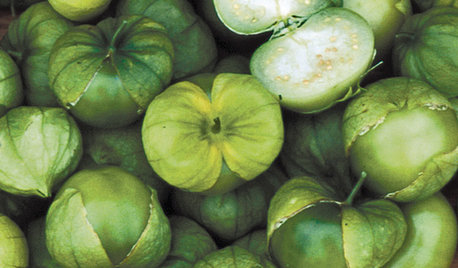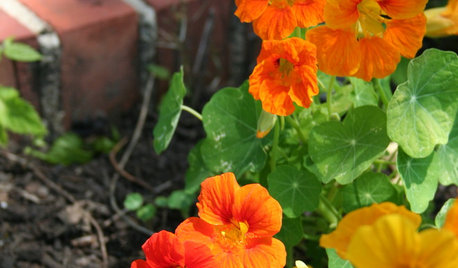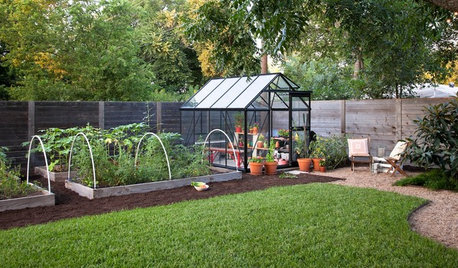Tomato disease?
MarilynShipley
10 years ago
Related Stories

EDIBLE GARDENSSummer Crops: How to Grow Tomatoes
Plant tomato seedlings in spring for one of the best tastes of summer, fresh from your backyard
Full Story
FARM YOUR YARDHouzz Call: Home Farmers, Show Us Your Edible Gardens
We want to see where your tomatoes, summer squashes and beautiful berries are growing this summer
Full Story
SUMMER FRUITS AND VEGETABLESSummer Crops: How to Grow Tomatillos
Grow this Mexican native for the freshest salsa verde — and for fewer problems than its tomato cousins
Full Story0

FARM YOUR YARDHow to Grow Vegetables in Containers
Get glorious vegetables and fruits on your patio with a pro’s guidance — including his personal recipe for potting mix
Full Story
EDIBLE GARDENS8 Surefire Vegetables and Herbs for Beginning Gardeners
Learn the edible plants that are popular and easy to grow in a backyard or container garden
Full Story
FARM YOUR YARD6 Things to Know Before You Start Growing Your Own Food
It takes time and practice, but growing edibles in the suburbs or city is possible with smart prep and patience
Full Story
SPRING GARDENINGSummer Crops: How to Grow Strawberries
Pluck your own sweet strawberries right from the garden vine for smoothies, salads or eating then and there
Full Story
GARDENING GUIDESDon’t Let These Excuses Keep You From Gardening
Stop blaming your lack of experience, space, time and funds, and get on with the joy of garden making
Full Story
EDIBLE GARDENSA Formerly Weedy Lot Now Brims With Edibles and Honeybees
Photographers transform their barren backyard into an oasis filled with fruit, vegetables, honey, eggs and more
Full Story
GARDENING GUIDESEssential Watering Tips for Your Edible Garden
To give your edible plants just what they need, check out these guidelines for how, when and how much to water
Full Story






helenh
Okiedawn OK Zone 7
Related Professionals
East Rancho Dominguez Landscape Architects & Landscape Designers · Ilchester Landscape Architects & Landscape Designers · Wareham Landscape Architects & Landscape Designers · Washington Landscape Architects & Landscape Designers · Burlington Landscape Contractors · Avocado Heights Landscape Contractors · Indianapolis Landscape Contractors · Foothill Farms Decks, Patios & Outdoor Enclosures · Garden City Decks, Patios & Outdoor Enclosures · Leander Decks, Patios & Outdoor Enclosures · Meridian Decks, Patios & Outdoor Enclosures · Morgan Hill Decks, Patios & Outdoor Enclosures · Northglenn Decks, Patios & Outdoor Enclosures · Randallstown Decks, Patios & Outdoor Enclosures · Wildomar Decks, Patios & Outdoor Enclosures